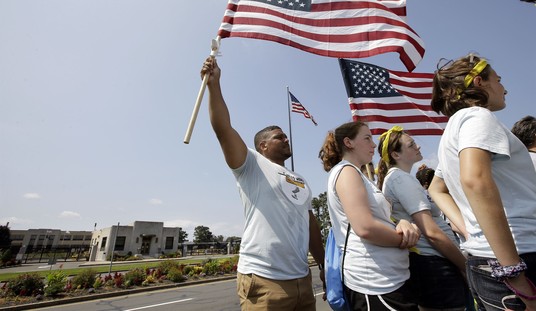But last week, the board of directors of the company he created fired him and the reign of Dov Charney, came to an end. He still owns 27 percent of the company, and he's fighting the sacking. For anyone unfamiliar with fashion-trade gossip, American Apparel offered a mixed bag of messages. The self-made founder, who emigrated to Los Angeles from Montreal, was an iconoclastic entrepreneur who championed American labor (no outsourcing), paid his workers good wages for making the cotton basics that added sex appeal to the preppy image. He made casual cotton cool, worn by gays, geeks, nerds, hip girls and boys, urban women and metrosexuals.
But the man had major flaws. He was sued by employees for sexual harassment and was known to attend in-house business meetings in his underwear. Sordid stories about his behavior became expensive with increased litigation and defense costs, severance packages and settlement payments. The company stock fell. His lurid personal behavior was accompanied by adverts of vulnerable-looking models in see-through leotards and scant panties, which came close to suggesting child porn.
He knew he was his own worst enemy, but he thought it important for fashion to extend the sexual boundaries of style when he opened his first store in Los Angeles in 2003. There's a long history of chic outrage in fashion, and his audience was ever more accepting after Brooke Shields at the age of 15 whispered seductively in a famous commercial that "there's nothing between me and my Calvins." (She's 49 now, and there's not so much interest in her Calvins.)
Recommended
Apart from Dov Charney's personal extravagances, his demise coincides with a renewed questioning of our sexualized culture and its impact on the younger generations among us. A new low in an American Apparel ad showed the back of a young girl in miniskirt, bending over with the camera focused on her panties. This was less about selling the miniskirt than it was about a pubescent-shock sexual image.
This is not what feminists meant when they assured women that "You've come a long way, baby."
Common sense needs no psychological studies to affirm that adult fashion trends affect the way little girls see themselves, and there are ample examples examining the way little girls connect sexiness with popularity and self-perception. Tight leggings, skinny jeans, short shorts, tiny bikinis are big business in the pubescent set.
"Today's canny girls, emboldened by the hashtag "YesAllWomen" Twitter culture, scold their elders -- 'Don't tell us what to wear; teach the boys not to stare,'" Peggy Orenstein writes in The New York Times. "They are correct: Addressing leering or harassment will challenge young men's assumptions."
Actually, they're wrong. It may challenge some young men, but it won't change all of them, because such expectations ignore the fundamental and enduring differences between the sexes. Young women are learning this on college campuses, where mixed messages have made a mess of male-female relationships.
Harvey Mansfield, professor of government at Harvard, describes how feminists have failed to bring men up to a higher standard, and instead sink to the level of men. "It's not the fault of men that women want to join them in excess rather than calm them down," he writes in The Weekly Standard, "for men, too, are victims of the rape culture." He cites the false cues, driven by drunkenness, that men take in the campus hook-up culture.
The Harvard campus is roiled in the wake of a sexual assault on a young woman, described in her widely circulated letter in the student Harvard Crimson. She tells (anonymously) of her "hopeless, powerless, reaction" to an encounter in a dorm with a friend when she was drunk. Harvard, in response to this one accusation, assigned a "coordinator" with a staff to deal with the incident and its aftermath, and the federal government has sprung to action to combat the "hostile environments" on campuses, offering "significant guidance" for what it deems "appropriate" behavior between men and women. Nanny government now replaces in locos parentis.
Rape is a crime, but it becomes a harder call currently as the ambiguous "hook-up" rules muddle sexual foreplay. Gender neutrality in rhetoric does not trump biological nature in action. Here's an idea: What about a renewed appreciation for differences, adding a little feminine modesty to engender male restraint? We could start with what American apparel we encourage our young girls to wear.

























Join the conversation as a VIP Member